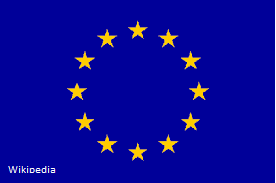 “Europe will not be made all at once,
“Europe will not be made all at once,
or according to a single plan. …
It will be built through concrete achievements
which first create a de facto solidarity.
Robert Schuman
You are looking for more detailed information. Find the full German version of this article here. You might use Google Translate in order to to grasp the most essential information in English.
The aim of creating an economic power and everlasting peace in Europe is at the heart of the European project. Starting from this, it has developed into a community of common values: The principle of equality of women and men is an integral part of these values and has been enshrined in primary law. As a matter of fact one might find it worthwhile to ask if equality is also being pushed in the institutional set-up that constitutes the EU. Do EU organs and institutions fully embrace Gender Budgeting? An analysis of the following documents is to shed light on questions like this:
- The current resolution on Gender Mainstreaming in the work of the European Parliament from 2016;
- The European Parliament resolution of 9 June 2015 on the EU Strategy for equality between women and men post 2015;
- The study entitled “The EU Budget for Gender Equality“, which was released in 2015.
They prove that Gender Budgeting ranks on the EU agenda, yet that the road towards it has been a rocky one.
- Resolution on Gender Mainstreaming in the work of the European Parliament from 2016;
According to the European Parliament Resolution Gender Mainstreaming in the Work of the European Parliament none of the EU-Institutions has consistently applied Gender Budgeting so far. Yet, this is meant to change with the help of the multiannual financial framework (MFF). Not only does the resolution’s conclusion about gender budgeting in the European Parliament fall on a sober note, but so does its report on Gender Mainstreaming: The European Parliament lacks financial and human resources earmarked for Gender Mainstreaming. While budgeting should make use of disaggregated data for women and men, data is not consistently collected. Only so would it be possible to assess the impact of Gender Mainstreaming instruments, resolutions and legislative texts and to implement Gender Budgeting in the European Parliament and beyond sustainably.
- b) European Parliament resolution of 9 June 2015 on the EU Strategy for equality between women and men post 2015
The European Parliament resolution of 9 June 2015 on the EU Strategy for equality between women and men post 2015 is very similar to the European Parliament Resolution Gender Mainstreaming in the Work of the European Parliament. By way of example, the European Parliament
„Calls on the Commission to promote the use of gender mainstreaming, gender budgeting and gender impact assessment in all areas and for each legislative proposal at all levels of governance, and thus ensure specific gender equality targets; asks the Court of Auditors also to incorporate the gender perspective when assessing the execution of the Union budget; asks Member States similarly to introduce the gender dimension in their budgets in order to analyse government programmes and policies, their impact on the allocation of resources and their contribution to equality between men and women;”
- Study entitled „The EU Budget for Gender Equality“
Recently, a study was released featuring gender equality in the EU’s budget. The key results of this study were:
- Many titles of the EU budget do not follow the EU’s high level commitment to the political goal of gender equality and Gender Mainstreaming as an instrument of how to reach it, neither fully nor partly;
- There is a lack of transparency. As a consequence some titles of the EU budget do not take account of gender equality goals. This goes hand in hand with a lack of gender equality indicators in most titles. Again, this makes it impossible to always assess the impact of political measures and undermines financial and budgetary accountability;
- There is a lack of data collection: Data is not collected in a disaggregated way according to gender; also, there is no obligation to do so, which may be the reason for this lack of data. This undermines any impact assessment of the EU’s gender equality measures as well as financial and budgetary accountability.
Therefore, the study makes the following recommendations:
- Gender equality should be embedded as a distinct policy objective in all titles of the EU budget;
- Gender Mainstreaming should be embedded as an implementation method in all titles of the EU budget;
- Gender equality objectives and Gender Mainstreaming obligations should be consistently implemented and considered in all budget titles; particularly in cross-cutting issues that fall within the remit of several budget titles;
- Individual actions and policy objectives in the budget should be specified in order to increase budget transparency;
- Gender specific indicators should be adopted to be applied in project selection, monitoring and evaluation phases in all actions that receive funding from the EU budget;
- Gender-disaggregated data as to beneficiaries and participants of all actions that receive EU funding should be systemically collected and published.
Conclusion
There are increased attempts to implement Gender Budgeting at EU level and within the EU’s budget comprehensively. Even though it is still quite a long way to go, each and every attempt matters as Gender Budgeting increases transparency and legitimacy of the EU budget; not to mention that the EU’s political strategies reflect among public and private stakeholders at national and local level as well as society.
Leave a reply by using the form below. If you cannot access the comment section, please send us your statement by mail to: imag-gmb@bka.gv.at!